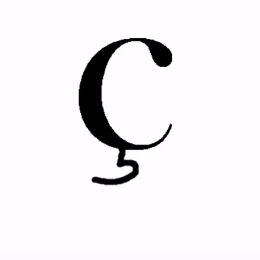I received the following suggestion from Oska:
I would enjoy if you could also perhaps do a lesson or two in the future on other French diacritics and ligatures, e.g. the French cedilla, the diaeresis (or tréma), the ligature ‘œ’. As speakers and writers of a language which does not mostly possess such ‘baroque’ written adornments, I think Anglophones (= English speakers) find them quite fascinating. And perhaps a little bit of a barrier, which explication can help overcome.
Thanks Oska, these are very interesting questions! I will actually dedicate three articles to them:
- Part 1 : la cédille (French cedilla)
- Part 2 : le tréma (diaeresis)
- Part 3 : le “œ” (ligature)
I also love the expression “‘baroque’ written adornments”: it makes me see them with a new perspective 😉
Alright, so here’s all I know about the cedilla!
A bit of phonetics first!
How do you pronounce the letter C in the following examples?
CA, CO, CU, CE, CI, CY
I notice that students often get stuck here. Doubt creeps in and they actually have no clue! If that is your case, I suggest you think about words you know which contain these letters. Here, I’ve even chosen words that are similar in English and in French to help:
CA as in “Canada”, “Jessica”
CO as in “Colorado”, “couleur” / “colour”
CU as in “culture”
CE as in “patience”, “silence”
CI as it “cité” / “city”, “merci”
CY as in “bicyclette” / “bicycle”
So ? If you’ve read correctly, you should have found the following rule:
- The letter C is pronounced [k] in front of A, O, U;
- The letter C is pronounced [s] in front of E, I, Y.
Again, it’s the same rule in French as in English, so nothing new or extraordinary there. I’m just making you aware of it.
A matter of consistency
Now, if I wrote the name of my country (France!) and the name of my langue (French) like this:
“la France”, “le francais”,
it would read [frãs], [frãkɛ] (click here to listen to me pronouncing these words), once with the letter “C” pronounced [s] and once pronunced [k]. We’d have an inconsistency in the pronunciation.
To keep the [s] sound in front of the letters A, O and U, we will add that little hook called French cedilla (cédille) under the letter C. We’ll therefore spell and pronounce:
“la France” [frãs], “le français” [frãsɛ]. (Click here to listen)
I find that the French cedilla actually makes the letter C looks like an S, doesn’t it?
Watch how to draw/write the French cedilla!
The cedilla in French conjugation
The same principle will apply when you conjugate a verb ending in _CER.
Example:
Commencer (= to start, to begin)
Je commence
Tu commences
Il commence
Nous commencons → commençons
Vous commencez
Ils commencent
A French cedilla is needed for the « nous » form to keep the consistency and the [s] sound.
Words derived from the same family
As we’ve seen for “France/français” and “commencer/commençons”, some words will need a cedilla to continue looking and sounding like other words from the same family.
Example:
glacer, (to chill ; to freeze ; to candy, to sugarcoat)
une glace (an ice cream)
le glaçage (icing, frosting – on a cake)
un glaçon (an ice cube)
Other words with a French cedilla
Sometimes, it’s hard to know why a word is spelled with a French cedilla rather than simply with an S, especially when we can’t think of other words from the same family!
Example: “un hameçon” (a fish-hook).
In these cases, looking at the etymology of a word may help.
Example: “un garçon” (a boy)
I found that, along time ago, a feminine version of this noun, “une garce” was used to describe a girl/a woman.
Note 1: nowadays, the word “garce” is still used to describe a girl, but its meaning has evolved to a very pejorative connotation – “garce” now means “little devil”, or worse “b*tch”).
Note 2: in modern French, we have “un gars” for “a boy/a guy” (slang).
Now, learn everything you need to know about “le tréma” (diaeresis)!
